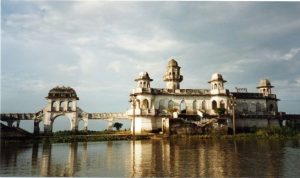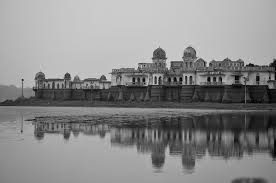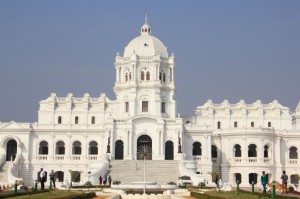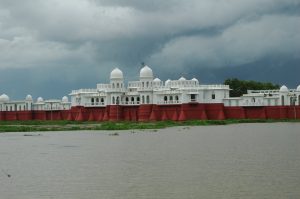West Tripura Travel guide is incomplete without a mention of its natural beauty and rich heritage. West Tripura District has been divided into five sub-divisions named as Sadar Subdivision, Bishalgarh Subdivision, Khowai Subdivision, Sonamura Subdivision and Teliamura Subdivision. The West Tripura District is bounded by Bangladesh in the north and west, North Tripura in the east and South Tripura in the south. It is spread in an area of 3544 sq Kms.
HOW TO REACH
By Air:-
The district has its own Domestic Airport named as Agartala Airport, Agartala, roughly few minutes drive from the city center. It is well connected to a spectrum of cities in the country such as Bangalore, Guwahati, Hyderabad, Kolkata, Mumbai, Imphal, New Delhi and Silchar through IndiGo, Air India Regional, Go Air, Air India and Spice Jet etc.
 By Road:-
Agartala is 44 Kms from Teliamura, 109 Kms from Manu, 133 Kms from Kumarghat, 295 Kms from Silchar, 300 Kms from Aizawl, 313 Kms from Dwarband, 459 Kms from Shillong, 557 Kms from Imphal, 558 Kms from Guwahati and is connected through Tripura State Road Transport Corporation (TSRTC) and some private travel services.
By Train:-
The nearest Railway Station is Kumarghat Railway Station which is 133 Kms from the Agartala city center and connected to all the major cities of Tripura and other state like Kolkata, Delhi, Indore, Chennai and Bangalore.
WHAT TO SEE
Agartala:-
 Agartala is situated in the foothills of the Great Himalayas, in the north eastern part of India. Located in a belt of rich flora and fauna, the cultural and the state capital of Tripura is a laid back administrative centre.
Agartala is situated in the foothills of the Great Himalayas, in the north eastern part of India. Located in a belt of rich flora and fauna, the cultural and the state capital of Tripura is a laid back administrative centre.
Puratan Agartala:-
 Puratan Agartala, or Old Agartala, is the second capital of Agartala. It is 7 km east of modern day Agartala and is mostly known for the Chaturdasha Devata Mandir. The temple is dedicated to fourteen gods and goddesses who are represented only by their heads. The architecture of this temple is a mix of the Bankura style and the Buddhist stupa style. The temple hosts the week long Kharchi Puja in July every year which draws a large number of people.
Puratan Agartala, or Old Agartala, is the second capital of Agartala. It is 7 km east of modern day Agartala and is mostly known for the Chaturdasha Devata Mandir. The temple is dedicated to fourteen gods and goddesses who are represented only by their heads. The architecture of this temple is a mix of the Bankura style and the Buddhist stupa style. The temple hosts the week long Kharchi Puja in July every year which draws a large number of people.
Jagannath Temple:-
 Jagannath Temple was built by the Manikyas, who chose Agartala above Udaipur as the capital. For decorating the capital, they adorned it with numerous monuments and beautiful sites. Though inclined to Islamic architecture, the Jagannath Temple represents a confluence of Hemadpanthi and Arabic style on the exterior and Hindu flair on the insides.
Jagannath Temple was built by the Manikyas, who chose Agartala above Udaipur as the capital. For decorating the capital, they adorned it with numerous monuments and beautiful sites. Though inclined to Islamic architecture, the Jagannath Temple represents a confluence of Hemadpanthi and Arabic style on the exterior and Hindu flair on the insides.
State Museum:-
 Tripura State Museum, situated in the heart of Agartala on HGB Road, was established in 1970. Exhibits at this museum include few rare stone images and epigraph numismatic evidence that reveal the stories of Tripura’s glorious past. Historic old coins of various denomination and archaeological articles are also preserved in this museum.
Tripura State Museum, situated in the heart of Agartala on HGB Road, was established in 1970. Exhibits at this museum include few rare stone images and epigraph numismatic evidence that reveal the stories of Tripura’s glorious past. Historic old coins of various denomination and archaeological articles are also preserved in this museum.
Buddha Temple:-
 One of the most significant religious places and evidence of the Buddhism religion in the region is the Buddha Temple (Buddha Mandir) which was constructed in 1946. It is situated in the center of the city. The two exquisite idols of Bodhisattva and Buddha, said to be of Burmese origin were transferred from the Royal Palace to this temple. A place to mingle with the spiritual and is enhanced by the lovely
One of the most significant religious places and evidence of the Buddhism religion in the region is the Buddha Temple (Buddha Mandir) which was constructed in 1946. It is situated in the center of the city. The two exquisite idols of Bodhisattva and Buddha, said to be of Burmese origin were transferred from the Royal Palace to this temple. A place to mingle with the spiritual and is enhanced by the lovely
flowers and gardens within the premises of the temple.
Kamalasagar Kali Temple:-
 Also known as Kasba Kali Bari, Kamalasagar Kali Temple is located about 27 kilometers from Agartala. Kamalasagar Kali Temple is located in the Bangladesh border and is one of the most popular picnic spots in Tripura. The image of the deity housed at the temple resembles Mahishasurmardini. Situated on the hillock overlooking the Kamala Sagar, Kamalasagar Kali Temple dates back to the 17th century.
Also known as Kasba Kali Bari, Kamalasagar Kali Temple is located about 27 kilometers from Agartala. Kamalasagar Kali Temple is located in the Bangladesh border and is one of the most popular picnic spots in Tripura. The image of the deity housed at the temple resembles Mahishasurmardini. Situated on the hillock overlooking the Kamala Sagar, Kamalasagar Kali Temple dates back to the 17th century.
Sepahijala Wildlife Sanctuary:-
 Sepahijala Wildlife Sanctuary is sited at a distance of 35 km from the capital city of Agartala. The sanctuary covers an expanse of 185.53 and is renowned for its wildlife, birds as well as primates. The sanctuary is the ideal retreat that personifies Tripura’s biodiversity and promotes the eco tourism in the state.
Sepahijala Wildlife Sanctuary is sited at a distance of 35 km from the capital city of Agartala. The sanctuary covers an expanse of 185.53 and is renowned for its wildlife, birds as well as primates. The sanctuary is the ideal retreat that personifies Tripura’s biodiversity and promotes the eco tourism in the state.
Ujjayanta Palace:-
 Ujjayanta Palace, or Ujjoyonto Prashad in Bengali is former royal palace currently serving as the meeting place of the Tripura Legislative Assembly. Built by Maharaja Radhakishore Manikya during 1899–1901, this palace was named by the Nobel laureate, Rabindranath Tagore. The palace was constructed 10 km away from Agartala; however, the earthquake of 1897 destroyed it. The palace was thus rebuilt in the heart of Agartala city.
Ujjayanta Palace, or Ujjoyonto Prashad in Bengali is former royal palace currently serving as the meeting place of the Tripura Legislative Assembly. Built by Maharaja Radhakishore Manikya during 1899–1901, this palace was named by the Nobel laureate, Rabindranath Tagore. The palace was constructed 10 km away from Agartala; however, the earthquake of 1897 destroyed it. The palace was thus rebuilt in the heart of Agartala city.
Neermahal Water Palace:-
 Neermahal, meaning Water Palace is a former royal palace situated in the vicinity of the capital of Tripura. Built in 1930 by King Bir Bikram Kishore Debbarman, this palace assimilates Hindu and Islamic architectural styles. The palace stands in the middle of Rudrasagar Lake, which is a 6 sq. km water body.
Neermahal, meaning Water Palace is a former royal palace situated in the vicinity of the capital of Tripura. Built in 1930 by King Bir Bikram Kishore Debbarman, this palace assimilates Hindu and Islamic architectural styles. The palace stands in the middle of Rudrasagar Lake, which is a 6 sq. km water body.
Kunjaban Palace:-
 Kunjaban Palace, formerly known as Pushbanta Palace, is a recreation palace that was constructed by King Birendra Kishore Manikya in 1917. Located 1 km north of the Ujjayanta Palace, this enormous building on the hillock currently serves as the official residence of the Governor of Tripura. To the south of the palace is a large park, named Ravindra Kanan, which is open to the public throughout the year.
Kunjaban Palace, formerly known as Pushbanta Palace, is a recreation palace that was constructed by King Birendra Kishore Manikya in 1917. Located 1 km north of the Ujjayanta Palace, this enormous building on the hillock currently serves as the official residence of the Governor of Tripura. To the south of the palace is a large park, named Ravindra Kanan, which is open to the public throughout the year.
SHOPPING:-
The state capital Agartala is the best place for shopping in Tripura. You can also opt for visiting the tribal villages to see the craftsmen at work and can shop from them. As in all other states, you would find host of Government run emporia and private shops for shopping in Tripura. The colorful bazaars with the assortment of variegated artifacts provide visual delight.
FOOD:-
A large number of vegetarians among non-tribals who switch over from non-vegetarian to purely vegetarian food because of Hindu religious influences depend on a variety of vegetables and milk for sustenance. The food-habits of the non-tribal Bengalis here resemble those of their counterparts in Assam, West Bengal and Bangladesh.It is however the indigenous tribal food which adds to the charm and distinctiveness of Tripura cuisine. Nevertheless, the basic tribal food habit remains unchanged. Here we furnish a list of popular tribal delicacies.